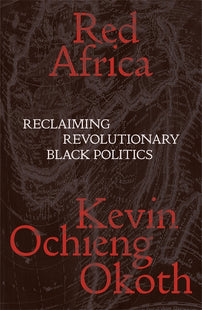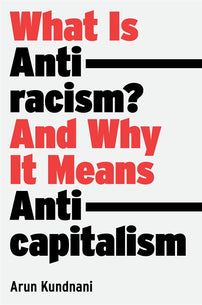Realizing Africa
"Through his filmmaking and overall cinematic framework, Sembène realized the dream of a unified and borderless Africa which its political leaders have yet to produce." Matene Toure revisits Ousmane Sembène's 1988 film Camp de Thiaroye, highlighting his life's ambition of inspiring revolutionary action through film.

"Of all African film directors, Sembène is the first to confer value to images."
– Med Hondo
Much as cultural imperialism works to distort, disfigure, and destroy the evidence of the brutal realities of conquest, exploitation, and genocide, the dominant regimes of cinematic and visual representations of the West work to hide and normalize the traumas of colonial violence. Yet, equally, visual forms have proved necessary for the construction of the post-colonial self. “Cinema [also] holds the possibility of counter-narratives,” as cultural critic Yasmina Price states. “Such experiments have acted as the glitch, the rupture, the stutter in the polished continuity of the stories capitalism, colonialism, and imperialism tell about themselves.”
The Senegalese filmmaker, novelist, and militant trade unionist Ousmane Sembène saw cinema as a “night school” for the people. With his profoundly dialectical style of filmmaking, he transformed cinema into an accessible means of political education, by employing a methodology invested in the idea of recuperating the hidden histories of West African resistance and Black internationalism. While the image does not come without its precedents, Sembène’s cinematic works were experiments in militancy, subversion, and disruption; counter-images confronting the history and continuations of global capitalism and colonialism.
Camp de Thiaroye from 1988, one of Sembène’s later films, co-directed and co-written with Thierno Faty Sow, unearths the genocidal killing of the Tirailleurs Senegalais, soldiers from Francophone West Africa serving in the French army, in December of 1944. The Second World War was not the first time that the French army had used colonial troops on European battlefields. Between 1914 and 1918 some 200,000 such soldiers were, in the words of Walter Rodney, recruited “through the use of methods reminiscent of slave-hunting” Of these, an estimated 25,000 died, and “many more returned home mutilated, for they were used as cannon fodder during the European capitalist war.” As Rodney notes in How Europe Undeveloped Africa, many Africans served with pride despite their horrific treatment. “They mistakenly hoped that the army would be an avenue for displaying the courage and dignity of Africans,” Rodney writes, “and, in the process, earning freedom.” That hope proved to be illusory. On the battlefield, the colonists used Black soldiers as mere pawns, and even as test subjects for weapons of mass destruction.
Sembène’s film opens with a ceremonial parade on the dockyards of Dakar, there to greet the tirailleurs disembarking prior to repatriation. From the docks, the soldiers are then taken to a prison-like transit camp on the outskirts of the Senegalese capital.
Shortly before their detention in the Senegalese camp, Sergeant-Major Diatta (Ibrahima Sane), a soldier who fought with the 1st Free French Army in the Libyan desert and later in Europe where he took part in the liberation of Paris, is visited by relatives. They tell him that they have fled to the city from their home village, having survived a massacre by the colonial authorities. Diatta’s parents, he is told, are dead.
The audience is not told the cause of the massacre. But a clue perhaps lies in Sembène’s earlier work, Emitai (1971) in which we see a similar atrocity, committed in response to African resistance to forced enlistment into the French colonial army and the requisition of farm produce by the French military.
Upon visiting him, Diatta’s relatives are horrified to learn that he now has a white wife and a daughter back in France: “How dare you marry one of those who destroyed your village?” he is asked. The photo of his wife and young child looms in the background of the shot, foreshadowing a future unattainable under colonial rule. Diatta represents the “exceptional” African. A Western intellectual, educated in the metropole, he spends his time listening to classical music and reading European literature. Diatta represents the illusory construct of “Europeanization”: metropolitan French culture was shaped against the backdrop of colonial logics of African inferiority and White racial superiority. His mastery of French and English, his wartime heroism, and his professional status may grant him access to French culture, yet they do not shield him from the violence of anti-blackness and modernity. This ultimately lends to his radical awakening.
[book-strip index="1"]
In one of the film’s most striking and powerful scenes, Pays (Sidiki Bakaba), a deaf soldier struggling with PTSD after being tortured in the German concentration camp, Buchenwald, has flashbacks on entering the demobilization camp for the first time. Seeing the barbed wire fence surrounding the camp, images of Buchenwald’s prisoners flash through his mind. Pays is the beholder of the drama of the past, of the concentration camps and colonization, underlining the neglected fact of African suffering at the hands of the Nazis. On arriving at the camp, he recognizes the similarities between the French and Germans. Tightly gripping the barbed wire fence, black-and-white shots of dead prisoners serve as a premonition of what is in store for the black African soldiers. The scene ends with a cut to a group of prisoners of war sleeping on the bare ground of the camp. Realism is undercut by jarring moments of melodrama. Flashbacks disrupt the seemingly benign actions of the transit camp.
Fueled by Sembène’s own experiences fighting in the French Army and with the French Free Forces, the world of Camp de Thiaroye is shaped by his quasi-documentary style. Central to the film is this interconnectedness of language and culture, and in it, Sembène employed non-professional actors from across the African continent and the diaspora. Having no African language in common, the tirailleurs communicate using pidgin, a language that the occupying French army call “petit nègre” (“little nigger”). The colonial language is reworked and adapted to articulate their collective demands, grievances, and resistance, ultimately developing their political consciousness and insurgent protests. There is no hero at the center of the story; the film is situated in the camaraderie of the soldiers---via indigenous languages, culture, and shared struggles the soldiers unite against one common enemy.
Here Sembène’s approach to language speaks to a pan-Africanist and Marxist thread, one that is deeply embedded in his cinematic grammar. His earlier works Mandabi (1968), Emtai (1971), and Ceddo (1975) represented a turning point in his career. After the international success of his first feature film Black Girl (1966), he began to turn away from French financial support and toward filming in African languages. A multiplicity of indigenous African languages and cultures informed his films, dehegemonizing the colonial language. Sembène understood the potential of a cinema that spoke to ordinary Africans in their own tongues.
Camp de Thiaroye works from that which had once been obscured. The film presents a counter-discursive war history, interrogating the linkages between militarism, fascism, and anti-communism in its analysis of African political struggle. The horrific material conditions of the soldiers are buried behind barbed wire, the living quarters are cramped, and the food is inedible. After being denied the service pay owed to them, the refusal of the French military authorities to pay the soldiers the correct exchange rate of 1000 French francs to 500 CFA francs leads the soldiers to stage an occupation of the base. In response, the colonial officers accuse the regiment of looting the dead bodies on the battlefield and label them Communists and spies for the Nazis. The reactionary accusations propel Diatta to orate in a passionate speech that the projects of the colonial armies, be they French or Nazi, are inherently the same. In a close-up scene, Diatta indicts the French soldiers of the Vichy regime – many of whom are now colonial authorities – who initially refused to fight in the war but remained in Senegal where they committed all sorts of barbaric atrocities against civilian populations, such as the massacre at Effok (where his parents were murdered).
One of the French Generals visits the camp to quell the budding insurgency but is captured by the tirailleurs. Later capitulating to the soldiers, the General is cheered by the men as he leaves the camp. That night, the soldiers celebrate with music and dancing, proud of their valiant display of direct action. Later, Pays awakes instinctively to see colonial forces approaching the camp in tanks. He begins banging his German war helmet furiously against the wooden sheds to warn the other tirailleurs, but it’s too late. In the middle of the night, as they sleep, everyone in the camp is murdered.
Like most of his films, Camp de Thiaroye was banned in both Senegal and France for 10 years in an attempt to erase the tragedy from public memory. Yet, the film entered the competition at the 45th Venice International Film Festival, in which it won the Special Jury Prize. The film was the first Pan-African production made without European technical assistance or co-financing. As a founding member of the Pan-African Federation of Filmmakers (FEPACI), which launched under the banner of African political, cultural, and economic liberation and the promotion of African film industries; Sembène aimed to bolster African cinema by bridging a Pan-African agenda and cinema, divorcing themselves from the cinematic practices of Hollywood. Members of the cohort included Dikongué-Pipa, Haile Gerima, Cheriaa, Benoît Ramampy, Youssef Chahine, and Med Hondo who helped to release The Camp at Thiaroye in Paris long after its initial release in Africa.
[book-strip index="2"]
Through his filmmaking and overall cinematic framework, Sembène realized the dream of a unified and borderless Africa which its political leaders have yet to produce. Watching Camp de Thiaroye today, we can see it as a meditation on the backlash against France’s neo-colonial presence in Senegal and elsewhere in Africa, where many French troops are still stationed. Recent years have seen a series of popular anti-imperialist upsurges in several Francophone African countries. In Guinea, Mali, Chad, Senegal, Niger, and Burkina Faso, the people have demanded French troops leave their country; in Niger, Mali, and Burkina Faso they have done so successfully. Such neocolonialism was already taking shape when Sembène made Camp de Thiaroye. His cinema opens us to a world in which the French empire is weakening, economic crises bubbling away in the background as the colonial era nears its end. French colonialism is predicated on systemic exploitation to carry out its imperial project and when workers cease to be useful to that project or voice dissent; it deploys military forces to police, surveil, and destroy rebellion.
In The Wretched of the Earth, Frantz Fanon calls for an absolute political education. "To educate the masses politically,” he writes, “is to try, relentlessly and passionately, to teach the masses that everything depends on them; that if we stagnate it is their responsibility, and that if we go forward, it is due to them too." For Sembène, the audience, who he aspires to educate and entertain; the working and peasant classes who have borne the brunt of French colonial violence, will liberate Africa from the vestiges of Francophone colonialism.
Matene Toure is a freelance writer and culture critic based in New York City.

